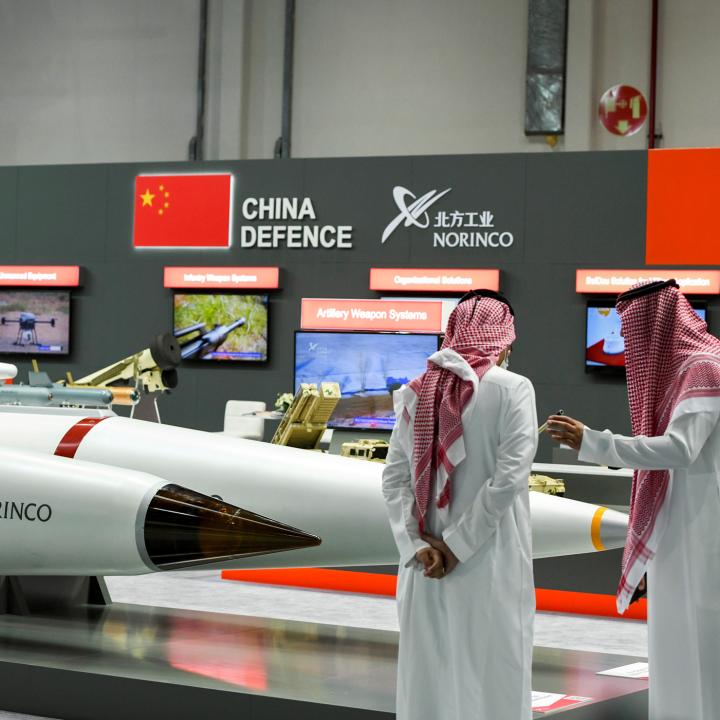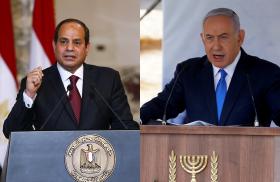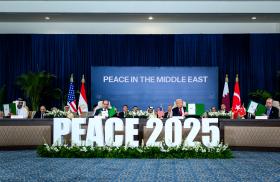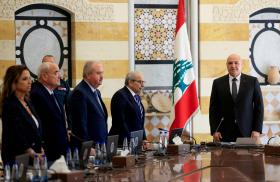
- Policy Analysis
- Fikra Forum
South Korea and the Middle East’s Defense Localization Drive: A New Strategic Fit

Given South Korea’s willingness to offer technology transfer, local production arrangements, and politically flexible partnerships, it has become an attractive alternative to Western and Russian suppliers, presenting both opportunities and competitive challenges for U.S. policy in the region.
The Middle East in recent years has been a rapidly growing defense market. Countries such as Saudi Arabia and the United Arab Emirates have poured billions into their arms localization programs in ambitious initiatives such as Saudi Vision 2030 and the UAE’s Tawazun Economic Program. Their key objective is not only to build a domestic defense industry by diversifying military supply sources, but also to increase jobs, stimulate technology transfer, and lessen dependence on traditional arms suppliers.
South Korea has emerged as a strikingly fitting partner for these initiatives, rapidly expanding its defense industry and demonstrating both technical finesse and the desire to localize production. With offerings ranging from artillery and armored vehicles to drones and naval platforms, South Korea is striving to position itself as a reliable and cost-effective defense cooperation partner, politically less constrained than Western and Russian suppliers. This convergence between the desire of Middle East countries to localize and South Korea’s defense export aspirations has important implications for regional stability and U.S. policy.
Rise as a Defense Exporter
South Korea’s defense industry has evolved dramatically over the years. In 2022, Seoul signed a massive defense contract for tanks and artillery pieces with Poland, and it has also had notable successes in the Middle East in recent years, with South Korean firms including Hanwha Defense, Hyundai Rotem, and KAI signing important contracts with customers in the region. Hanwha signed a $1.7 billion howitzer deal with Egypt in February 2022, a $3.5 billion missile system contract with the UAE in January 2022, and a $3.2 billion air defense agreement with Saudi Arabia in November 2023. These deals are appealing to Middle East purchasers not only because of the military hardware, but also because of South Korea’s openness to local production and joint development. For example, recent contracts signed by Hanwha Aerospace with Poland and Romania include local assembly and technology transfer, reflecting South Korea’s tendency to incorporate joint production into its defense export strategy.
Seoul does not employ comprehensive end-use monitoring or place political restrictions on buyers like those placed by Washington on the use of American weapons systems in conflict zones. Nor is it an unpredictable partner subject to Western sanctions like Russia, which has had problems with defense exports ever since the war in Ukraine began, or China, which faces U.S. export restrictions and embargoes on dual-use components. Instead, South Korea offers high-quality systems at reasonable prices and is flexible in satisfying purchasers’ offset or localization requirements.
Convergence with MENA Localization Efforts
Saudi Arabia’s Vision 2030 calls for at least 50 percent of defense procurement spending to be localized by 2030. Meanwhile, the UAE’s Tawazun program aims to build a domestic defense industry that will be able to export arms in the long run. For these two countries, localization is more than achieving military autonomy; it is also about gaining political legitimacy by establishing a high-tech industry that provides employment, generates knowledge, and reduces dependence on external arms suppliers.
South Korea’s defense industry is well positioned to help Saudi Arabia and the UAE achieve these objectives. It already has an export-oriented business model as well as experience in technology transfer and local assembly through projects in Europe and Asia. Furthermore, South Korea has taken the path of a middle power, developing its defense industry through industrial partnerships, licenses, and joint production. Past and recent examples of this include cooperation between KAI and Lockheed Martin on developing and manufacturing the T-50 jet, Seoul’s production of U.S. weapons systems like M48 tanks and F-5 fighter jets under license, and South Korea’s joint production of K9 artillery pieces with Poland, which demonstrate a step-by-step approach to industrialization. These examples correspond with what Saudi and Emirati policymakers wish to emulate.
Similarly, Egypt has agreed to produce Hanwha Defense’s K9 artillery pieces because South Korea’s deals with Turkey and Poland demonstrated how its system can be adapted to local industry. For instance, according to the deal Cairo signed with Seoul in 2022, not only did Hanwha provide K9A1 EGY artillery pieces, it also agreed to have them produced at Military Factory 200 outside Cairo, and transferred fire-control technology to Egyptian-French company Arab International Optronics. Saudi Arabia has held discussions on setting up joint ventures with Hanwha Group, not only for procurement, but also to enable domestic production and use of Hanwha’s products. Meanwhile, the UAE has shown interest in South Korea’s drone and missile technology, produced by firms like Hanwha Systems, Hanwha Aerospace, and LIG Nex1, which could be integrated into Emirati defense companies funded by the Tawazun program.
Implications for Regional Stability
South Korea’s growing role in arms exports should also appeal to Middle Eastern buyers seeking to counter Iran’s increasing drone and missile capabilities. First, purchasing arms from Seoul would help them diversify suppliers, allowing both buyer and seller to reduce exposure to the U.S. Arms Export Control Act and the executive branch’s arms transfer review. It would also safeguard them from European export control measures, most notably Germany’s embargo on new arms sales to Saudi Arabia. In addition, South Korean weapons systems and Western platforms are compatible.
Second, Seoul’s approach reflects the export-oriented strategies of South Korean firms, which value cost competitiveness, technology, and local production. Seoul considers defense exports an instrument for economic and diplomatic engagement rather than geopolitical coercion, and it provides support under the Global Pivotal State plan. As a result, South Korea’s arms exports are expanding partnerships without causing the instability often associated with politically motivated arms transfers.
In contrast, Russia bundles its arms sales with military advisors and geographical commitments—such as deployments in Syria or Mali, or mining and basing agreements in the Central African Republic or Sudan. Since South Korea maintains good relations with both the United States and key Middle Eastern countries such as Egypt, Saudi Arabia, and the UAE, it can sell without signaling bloc politics.
Third, locally produced South Korean systems could contribute to deterrence. For example, artillery and air defense capabilities developed through its partnerships in the Middle East could help counter missile and drone threats from nonstate actors or regional rivals. Examples are Hanwha Aerospace’s provision of K9 artillery pieces to Egypt and its attempts to establish local production with the Saudis, as well as LIG Nex1 and Hanwha’s efforts to advance an M-SAM air defense program with the UAE.
U.S. Policy Implications
For U.S. policymakers, South Korea’s growing footprint in the Middle East defense industry is both an opportunity and a challenge. On one hand, Seoul could support U.S. goals by strengthening the resilience of Gulf alliances, enhancing burden-sharing, and ensuring that localization does not drift toward Chinese or Russian suppliers. In addition, South Korea’s growing Middle East footprint places it in direct competition with China, which has aggressively pursued low-cost marketing over the years. South Korean weapons systems, unlike Chinese platforms, are compatible with Western standards, come with technology-transfer agreements, and allow the buyer to avoid the political controversies surrounding China’s defense exports. This quality and reliability have enabled Seoul to win contracts in countries like Egypt, the UAE, and Saudi Arabia, where Beijing has had difficulty providing long-term maintenance and upgrade support.
On the other hand, Washington must recognize that Seoul’s pragmatism is part of a broader competition. If the United States does not intend to meet the demand for localization, South Korea and other countries will fill the vacuum. This should cause Washington to think creatively about how to integrate its allies, including South Korea, into its Middle East security structure. Initiatives like the joint U.S.-Korean production project in Saudi Arabia or trilateral defense talks with Gulf countries could guarantee alignment rather than competition.
Conclusion
South Korea’s rise as a defense exporter is directly aligned with Middle East countries’ desire to localize. By providing reliable systems, flexible offsets, and a partnership model rooted in its own development experience, Seoul has become a suitable candidate for partnering with Saudi Arabia’s Vision 2030 and the UAE’s Tawazun.
Washington should take note that Seoul’s Middle East arms exports would not only restructure the defense procurement market, but also shape regional defense governance itself. This trend, if prudently leveraged, could contribute to regional stability and align with U.S. interests. While the Gulf states pursue ambitious localization projects, South Korea is showing that the future of Middle East defense does not belong only to the United States and Europe, but also to middle powers.


